Premium Only Content
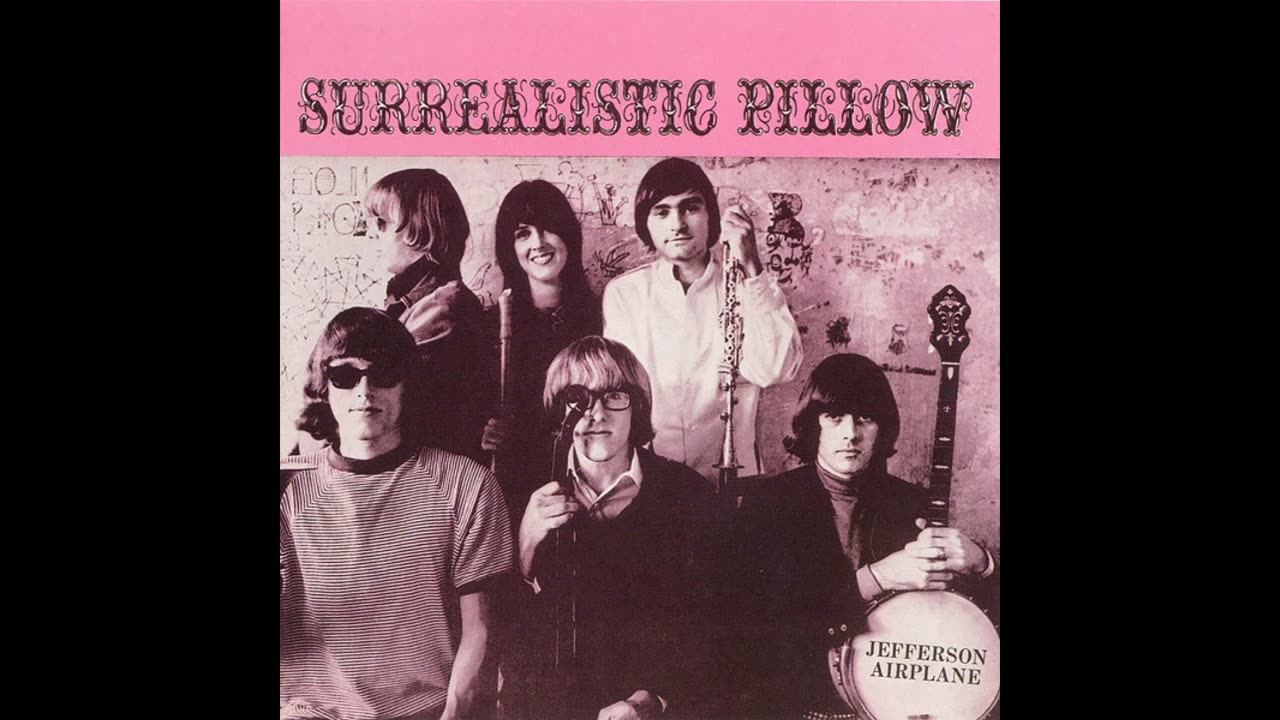
Jefferson Airplane - Surrealistic Pillow ( Full Album )
Jefferson Airplane - Surrealistic Pillow
Label:
RCA Victor – LSP 3766, RCA Victor – LSP-3766
Format:
Vinyl, LP, Album, Stereo, Rockaway Pressing
Country:
US
Released:
Feb 1967
Genre:
Rock
Style:
Folk Rock, Psychedelic Rock
1 She Has Funny Cars 3: 11
2 Somebody To Love 2: 58
3 My Best Friend 3: 02
4 Today 3: 00
5 Comin' Back To Me 5: 20
6 3/5 Of A Mile In 10 Seconds 3: 44
7 D.C.B.A. - 25 2: 38
8 How Do You Feel 3: 31
9 Embryonic Journey 1: 54
10 White Rabbit 2: 32
11 Plastic Fantastic Lover 2: 36
Jefferson Airplane was an American rock band formed in San Francisco, California in 1965. One of the pioneering bands of psychedelic rock, the group defined the San Francisco Sound and was the first from the Bay Area to achieve international commercial success. They headlined the Monterey Pop Festival (1967), Woodstock (1969), Altamont Free Concert (1969), and the first Isle of Wight Festival (1968) in England. Their 1967 breakout album Surrealistic Pillow was one of the most significant recordings of the Summer of Love. Two songs from that album, "Somebody to Love" and "White Rabbit", are among Rolling Stone's "500 Greatest Songs of All Time".
The October 1966 to February 1970 lineup of Jefferson Airplane, consisting of Marty Balin (vocals), Paul Kantner (guitar, vocals), Grace Slick (vocals, keyboards), Jorma Kaukonen (lead guitar, vocals), Jack Casady (bass), and Spencer Dryden (drums), was inducted into the Rock and Roll Hall of Fame in 1996. Balin left the band in 1971. After 1972, Jefferson Airplane effectively split into two groups. Kaukonen and Casady moved on full-time to their own band, Hot Tuna. Slick, Kantner, and the remaining members of Jefferson Airplane recruited new members and regrouped as Jefferson Starship in 1974, with Balin eventually joining them. Jefferson Airplane received a Grammy Lifetime Achievement Award in 2016.
In 1962, 20-year-old Marty Balin recorded two singles for Challenge Records, neither of which was successful. He then played in a folk quartet, the Town Criers, from April 1963 to June 1964. With the Beatles-led British Invasion, Balin was inspired by the emerging folk rock genre to form a group in March 1965 that would follow that lead, as well as opening a nightclub for them to perform. With a group of investors, he purchased a former pizza parlor on Fillmore Street in San Francisco and converted it into a club called the Matrix. Meanwhile, he searched for like-minded musicians to form his group.
Balin met fellow folk guitarist and singer Paul Kantner during a hootenanny at another local club, the Drinking Gourd, and invited Kantner to join him in putting together a band. A native San Franciscan, Kantner had started out performing on the Bay Area folk circuit in the early 1960s, alongside fellow folkies Jerry Garcia and David Crosby. He cited folk groups like the Kingston Trio and the Weavers as strong early influences. He briefly moved to Los Angeles in 1964 to work in a folk duo with future Airplane/Starship member David Freiberg (who subsequently joined Quicksilver Messenger Service).
Balin and Kantner then recruited other musicians to form the house band at the Matrix. They hired bluegrass acoustic bassist Bob Harvey and former Marine Band drummer Jerry Peloquin. Both Kantner and Balin wanted the group to have a female singer. After hearing vocalist Signe Toly Anderson at the Drinking Gourd, Balin invited her to be the group's co-lead singer. Anderson sang with the band for a year and performed on their first album before departing in October 1966 after the birth of her first child.
They still needed a lead guitarist. Kantner recruited an old friend, blues guitarist Jorma Kaukonen, who auditioned for the group and joined them in June, completing the original lineup. Originally from Washington, D.C., Kaukonen had moved to California in the early 1960s and met Kantner at Santa Clara University in 1962. Kaukonen was invited to jam with the new band, and although initially reluctant to join, he was won over after playing his guitar through a tape delay device that was part of the sound system used by Ken Kesey for his Acid Test parties.
Kaukonen came up with the band name "Jefferson Airplane". It was based on the nickname "Blind Thomas Jefferson Airplane," which was given to Kaukonen by his friend Richmond "Steve" Talbot, inspired by the name of one of Kaukonen's influences, bluesmen Blind Lemon Jefferson. According to Kaukonen, "The band was coming up with all these really stupid names and I said, 'If you want something really silly, try Jefferson Airplane.'"
The original lineup of Jefferson Airplane at the Matrix in summer 1965. Clockwise from left: Bob Harvey, Signe Toly Anderson, Jerry Peloquin, Paul Kantner, Jorma Kaukonen, and Marty Balin.
At a music shop near the Matrix, Peloquin encountered Matthew Katz, a music manager who was searching for a band to work with. Katz had beforehand offered to manage the Town Criers, Balin's previous group, but was turned down because of disagreements over his terms. Peloquin reintroduced Katz to Balin, who had been trying to find a manager for Jefferson Airplane. Katz enticed the band by mentioning that he had access to an unreleased Bob Dylan song, "Lay Down Your Weary Tune", and they appointed him as their manager, although they did not officially sign a contract with Katz until December 1965.
Jefferson Airplane in early 1966. From left: Anderson, Casady, Balin, Spence, Kantner and Kaukonen.
After rehearsing throughout the summer, the group made its first public appearance as Jefferson Airplane at the opening night of The Matrix on August 13, 1965. The band expanded from its folk roots, drawing inspiration from the Beatles, the Byrds and the Lovin' Spoonful, and gradually developed a more pop-oriented electric sound.[citation needed] Later that month, John L. Wasserman of the San Francisco Chronicle praised the band's "musical approach and style"—noting their blend of folk, blues, and rock and roll—and remarked, "Although there are but hints at this time, it is entirely possible that this will be the new direction of contemporary pop music."
A few weeks after the group started performing, Peloquin departed because of conflicts with his bandmates, in part because of his disdain for their drug use. Although he was not a drummer, singer-guitarist Skip Spence (who later co-founded Moby Grape) was then invited to replace Peloquin. Spence quickly adapted and made his debut at the Matrix in September. In October 1965, after the other members decided that Bob Harvey's bass playing was not up to par, he was replaced by guitarist-bassist Jack Casady, an old friend of Kaukonen from Washington, D.C. Casady played his first gig with the Airplane on October 30 in the Harmon Gym at the University of California, Berkeley.
The group's performance skills improved rapidly and they soon gained a strong following in and around San Francisco, aided by reviews from music journalist Ralph J. Gleason, the jazz critic of the San Francisco Chronicle. After seeing them at the Matrix, Gleason wrote in the September 13 edition of his "On the Town" column that the band, still without a record deal, would "obviously record for someone" eventually. Gleason's support raised the band's profile considerably, and within three months Katz was fielding offers from recording companies, although they had yet to perform outside the San Francisco Bay Area.
-
 DVR
DVR
SOLTEKGG
4 hours agoMorning coffee w/ Soltek
6.97K -
 1:27:01
1:27:01
Tate Speech by Andrew Tate
4 hours agoEMERGENCY MEETING EPISODE 94 - SOUTH KOREAN BBQ
171K49 -
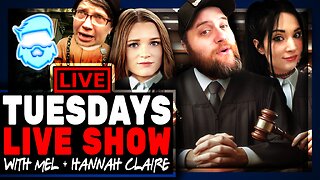 1:56:07
1:56:07
The Quartering
4 hours agoWoke Snow White Trailer Savaged, South Korea Marshall Law, Woke Journo Humiliated & CocaCola Roasted
64.4K10 -
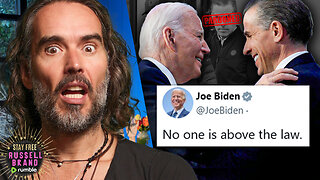 1:17:50
1:17:50
Russell Brand
5 hours ago"NO ONE IS ABOVE THE LAW! - Just When You Thought It Couldn’t Get Crazier! – SF506
138K145 -
 2:01:36
2:01:36
vivafrei
5 hours agoRay Epps Fed-Surrection Cover-Up? Hunter Biden Pardon Fallout! Plan-Demic Failures & MORE!
64.5K43 -
 16:22
16:22
Clownfish TV
2 hours agoMSNBC Has WORST Ratings in 20 Years! Rachel Maddow BEAT by Ancient Aliens RERUNS?!
21.2K5 -
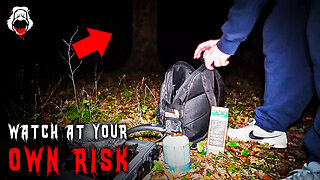 27:46
27:46
Goose Pimples
8 hours ago7 Ghost Videos SO SCARY You’ll Call in Sick Tomorrow
13.5K1 -
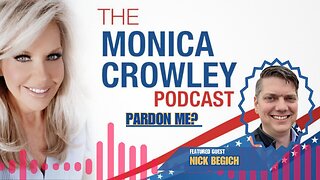 1:28:31
1:28:31
TheMonicaCrowleyPodcast
3 hours agoThe Monica Crowley Podcast: Pardon Me?
10.3K3 -
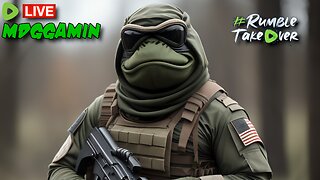 LIVE
LIVE
MDGgamin
6 hours ago🔴LIVE- Wake Up Stream Repeat - Games & Chatting - #RumbleTakeover
150 watching -
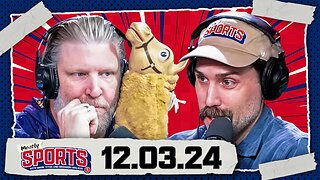 1:38:13
1:38:13
Mostly Sports With Mark Titus and Brandon Walker
1 day agoThe World Needs More Jameis Winston & Bo Nix | Mostly Sports EP 302 | 12.3.24
74.2K2